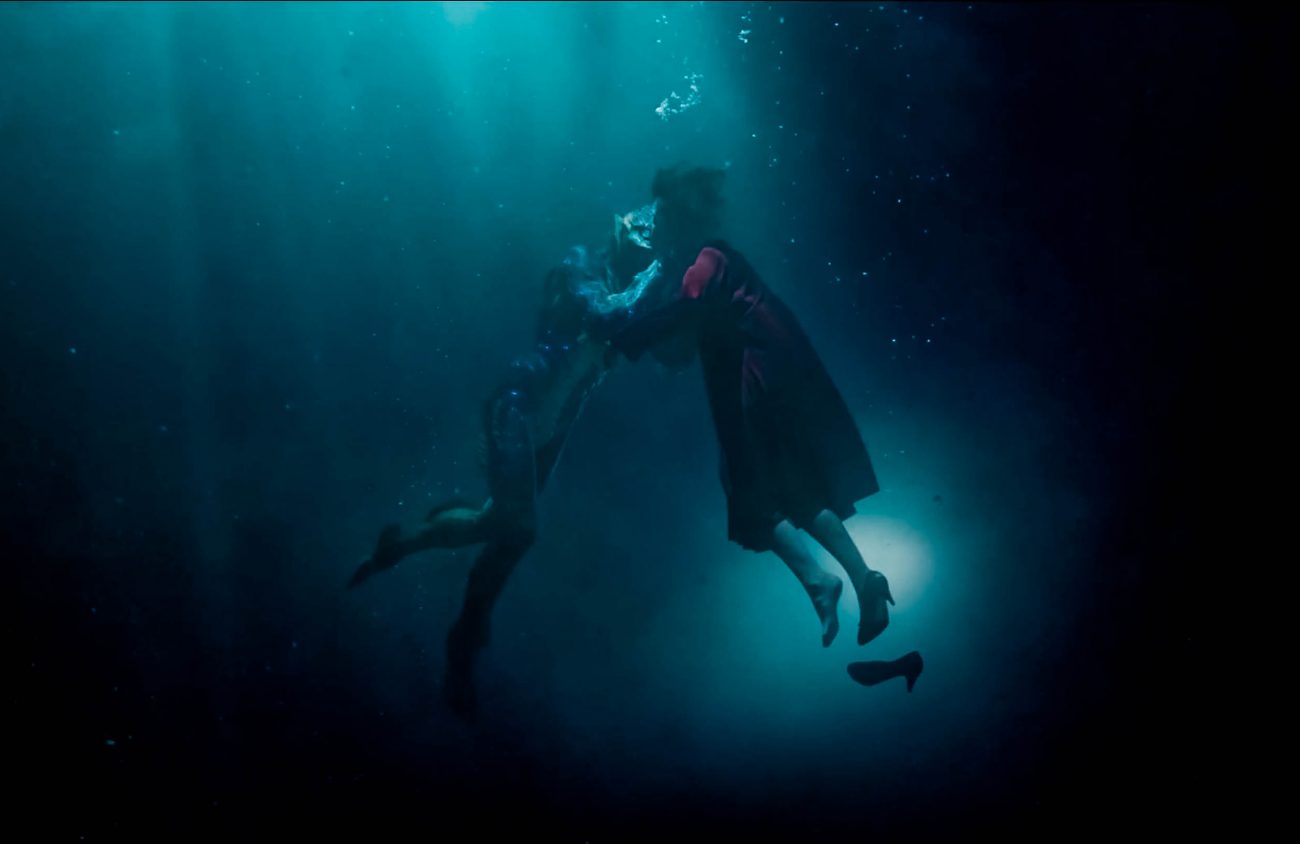In what has already proven something of a banner year for movies, writer/director Guillermo del Toro plunges in just under the wire with what is easily his finest film to date, and one of the best of the year. The Shape of Water is a flawlessly executed fairy tale in the classic sense, meaning it ain’t for little kids. The movie is unflinchingly erotic and unsparingly violent, sprung from a mature and tragic sensibility that is well harmonized between poles of secular grotesquery and fabulist pomp, all of it coming together under a singular vision that, in this instance, deserves to be called epic.
In its broadest strokes, The Shape of Water tells a story so oft-repeated as to be archetypal, from Beauty and the Beast to King Kong. Set in the early 1960s, the film tells the story of Elisa Esposito (the wonderful Sally Hawkins), a mute woman who is part of the janitorial crew at a huge aeronautics research center named Occam (just one of the innumerable sly hints del Toro sprinkles throughout the film).
With unerring economy, we get a quick snapshot of Sally’s life: Up in the morning for breakfast and some splashy masturbation in the tub before going to work, where she and her friend Zelda (Octavia Spencer) clean out labs, and then home for an evening of lively conversation with her aging homosexual friend Giles (Richard Jenkins), a frustrated commercial illustrator of the Norman Rockwell variety.
Of course, the Cold War and the international space race are both in full swing, and one day at the Occam facility a team of scientists — led by Richard Strickland (Michael Shannon), a sadistic government agent — wheels in an “asset” discovered in a river in South America. Cleaning out the lab, Sally catches sight of the asset in its watery observation tank: a beautiful bluish-green creature that is part man, part fish.
Whereas Strickland’s goal is to keep the creature away from the Russians by, preferably, killing it and cutting it open in the name of military science, Sally sneaks into the lab during off hours and woos the creature with hard-boiled eggs and music. Del Toro expertly maneuvers the complex story into a singular tale of romantic suspense, as Sally — with the aid of a Russian spy (Michael Stuhlbarg) — attempts to rescue the amphibious oddity before its scheduled vivisection.
Like the creature at its center, The Shape of Water is something of a relic — an exotic anachronism, a bit of old-fashioned storytelling that presents absolutely nothing new, but does so damn near perfectly. Like the Coen Brothers, to whose work his movie-making shares more than a passing resemblance, del Toro seems to celebrate the movies themselves by tapping into the magical realms that only cinema can evoke. He even throws in a breathtaking nod to the choreographed fantasias of Busby Berkeley.
The film is simply gorgeous (Dan Laustsen’s lush, sepia-tinted cinematography is just right), and it’s as well edited as any movie I’ve seen in a very long time. The pacing is superb. And beyond the captivating surfaces, the movie reveals a thematic and symbolic coherence that is truly rare, and for which del Toro himself has been striving since, say, Pan’s Labyrinth (2006). It might be a story as old as time itself — love and unity imperiled by greed and ignorance — but del Toro revitalizes it with a quality of soul that is no less timeless for being utterly urgent. (Broadway Metro)
